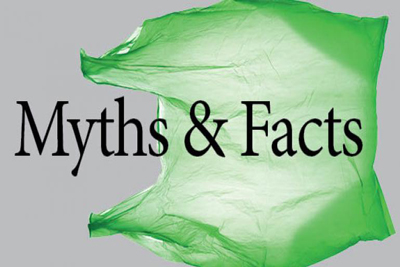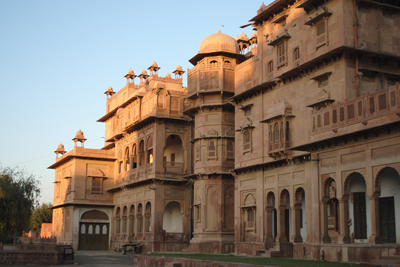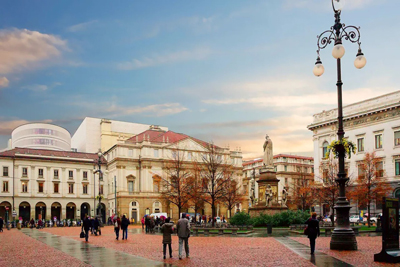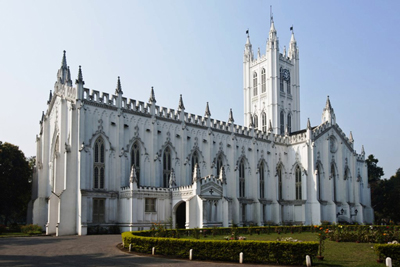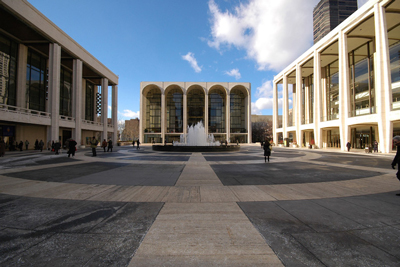- The Three Graces
- Psyche Revived by Cupids Kiss
- Rape of Proserpina
- Apollo & Daphne
- Aphrodite, Pan & Eros
- Ecstasy of Saint Teresa
- The Thinker
- The Kiss
- The Three Shades
- The Gates of Hell
- Ugolino & his Sons
- The Rape of the Sabine Woman
- Laocoon & His Sons
- Neptune & Triton
- Andromeda & the Sea Monster
- The Dying Gaul
- Sleeping Hermaphrodite
- Heracles & the Centaur Nessus
- Venus Victrix
- Beata Ludovica in Ecstasy
- Pieta
- David
- Venus de Milo
- Phryne
- Aphrodite of Knidos
- La Toilette d’Atalante
- Diana with a Stag
- Nymph with a Scorpion
- Woman Bitten by a Snake
- Satyr & Bacchante
- La Nymph Salmacis
- La Siesta
- Pygmalion & Galatea
- Apollo served by the Nymphs
- L’Air
- Expansion
- Man at Work
- Maman
- Absorbed by Light
- Mephistopheles & Margaretta
- A Day Out - Scintillating Sculpture
- Freedom, by Zenos Frudakis
- Cloud Gate
- The Giant Stone Vagina
- The Hand of the Desert
- The Mustangs of Las Colinas
- Sleeping Ariadne
- Lady Godiva
- Cleopatra
- Reclining Venus
- The Kópakonan Statue
- Soaked Bathsheba
- Night, by Michelangelo
- Moses, by Michaelangelo
- The veiled Christ
- De Vaartkapoen
- The Garment Worker
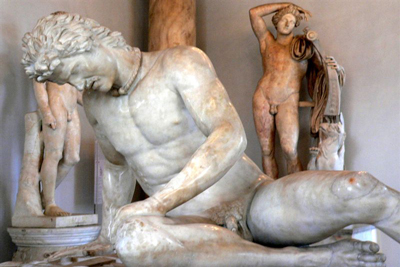
The Dying Gaul or the Dying Galatian, an ancient Romanian depiction of a defeated Celtic warrior, was probably unearthed in a Roman garden, along with another ancient marble sculpture, the ‘Gaul Committing Suicide with his wife’, during excavations for the foundation of the Villa Ludovisi, built upon the remains of the Gardens of Sallust, between 1621 and 1623. Initially, it was believed to be the depiction of a defeated gladiator in a Roman amphitheatre and was named as the Dying Gladiator or the Dying Murmillo. However, years later, the presence of a trumpet on the base of the sculpture led the German art historian and archaeologist Johann Winckelmann to suggest that the subject was instead a Greek herald.
Finally, at the turn of the 18th century scholars began to recognize that the figure depicts a Gallic or Celtic warrior.
The defeated warrior in the statue is depicted in nude, which is historically accurate based on ancient descriptions of some Celtic fighting groups. According to the Roman historian Livy, while the Greeks used iron breastplates or chainmail, the Celts of Asia Minor used to fight naked and their wounds were plain to see on the whiteness of their bodies, which the Greek historian Dionysius of Halicarnassus regarded as a foolish tactic and are mere symbols of barbarian boastfulness.
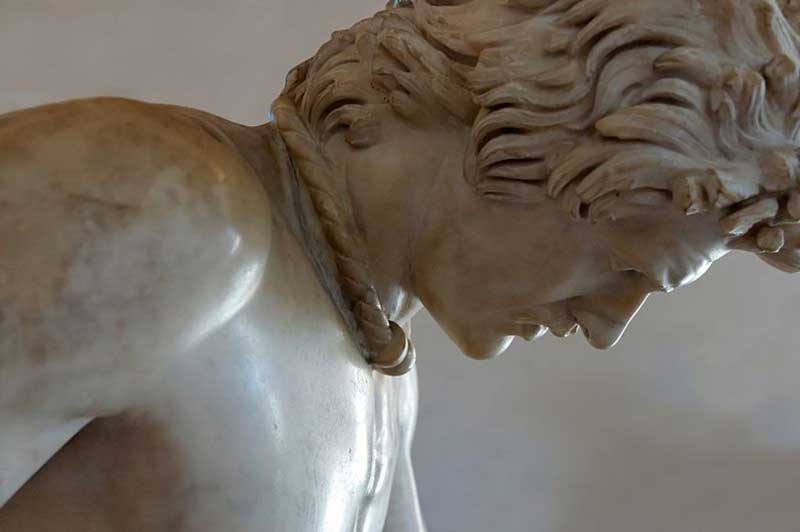
However, the breathtaking Dying Gaul was only a part of a large sculptural group of an epic monument to commemorate the decisive Hellenistic victories over the invading Gauls from nearby Galatia, in what is modern-day Turkey. The work was created between 100 and 200 BC and is a Roman copy of a lost bronze Greek original, commissioned by Attalus I of Pergamon between 230 BC and 220 BC, to celebrate his victory over the Galatians in Anatolia. The name of the sculptor of the original is unknown, but it has been suggested by many that in all probability, Epigonus, the court sculptor of the Attalid dynasty of Pergamon, was its creator. The Roman Emperor Nero took the bronze original away from Turkey to Rome, to install it in the campus of his bejeweled Golden House.
After its discovery, the white marble statue of the Dying Gaul first appeared on an inventory of the collections of a powerful Italian family in 1623 AD. Subsequently, Pope Clement XII acquired it in 1633, for the Capitoline collections. In the late 18th century, Napoleon grabbed the sculpture under the terms of the Treaty of Tolentino and subsequently, it was exhibited in the Louvre until 1816, when it was returned to Rome, to the Capitoline Museum in 1816, and remains there today.
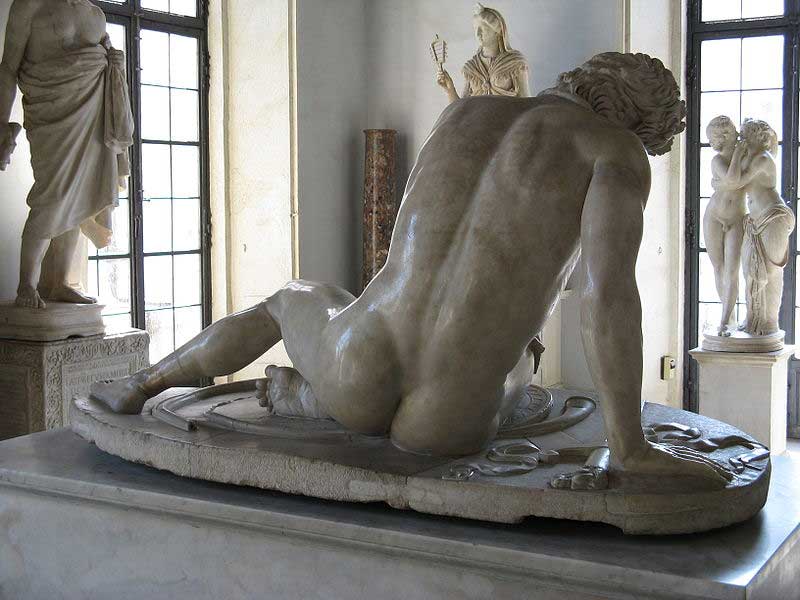
The slightly larger than life-sized marble sculpture of the Dying Gaul depicts a wounded and collapsing Celtic warrior with characteristic hairstyle, moustache and a stiff metallic ring around his neck. While he is supporting himself with one arm, the other hand is resting weakly on an outstretched leg. The hand on the ground is atop a broken sword and his head is bent downward, as if in shame and self-pity.
He is bleeding and bleeding to die, as his lower right chest reveals a bleeding sword puncture and he lies on his fallen shield while his sword, belt, and a curved trumpet lie beside him. The sword hilt bears a lion head. The layers of beauty, strength, inwardness, isolation, vulnerability and the overall sensuous of the creation is simply heartbreaking. The figure represented with stunning realism and pathos, particularly as regards the face of the warrior. The Dying Gaul truly represents courage in defeat, composure in the face of death and dignity. The present base of the statue was added later, after its discovery in the 17th century.
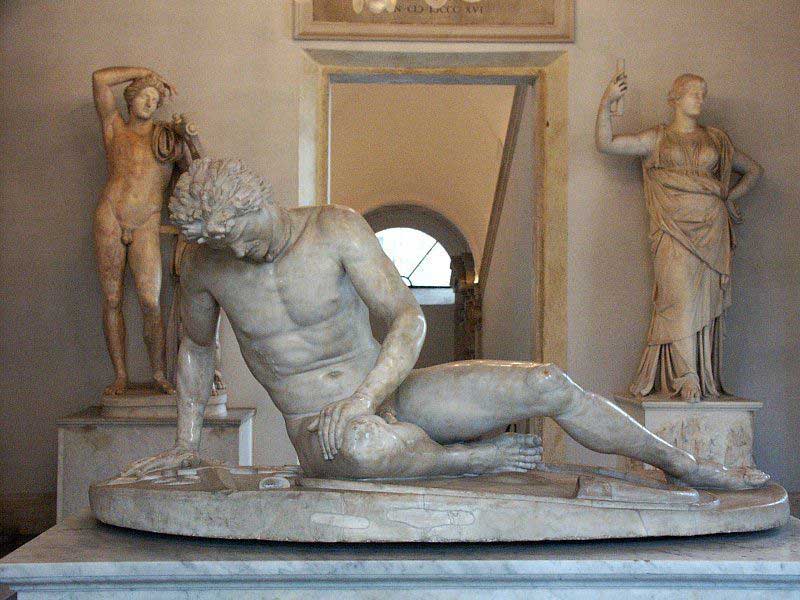
The Dying Gaul is a masterpiece and King Philip IV of Spain and Louis XIV of France commissioned its full-size copies. In fact, it was endlessly copied by art students and inspired works by Diego Velázquez, Jacques-Louis David, Giovanni Paolo Panini, and other artists.


